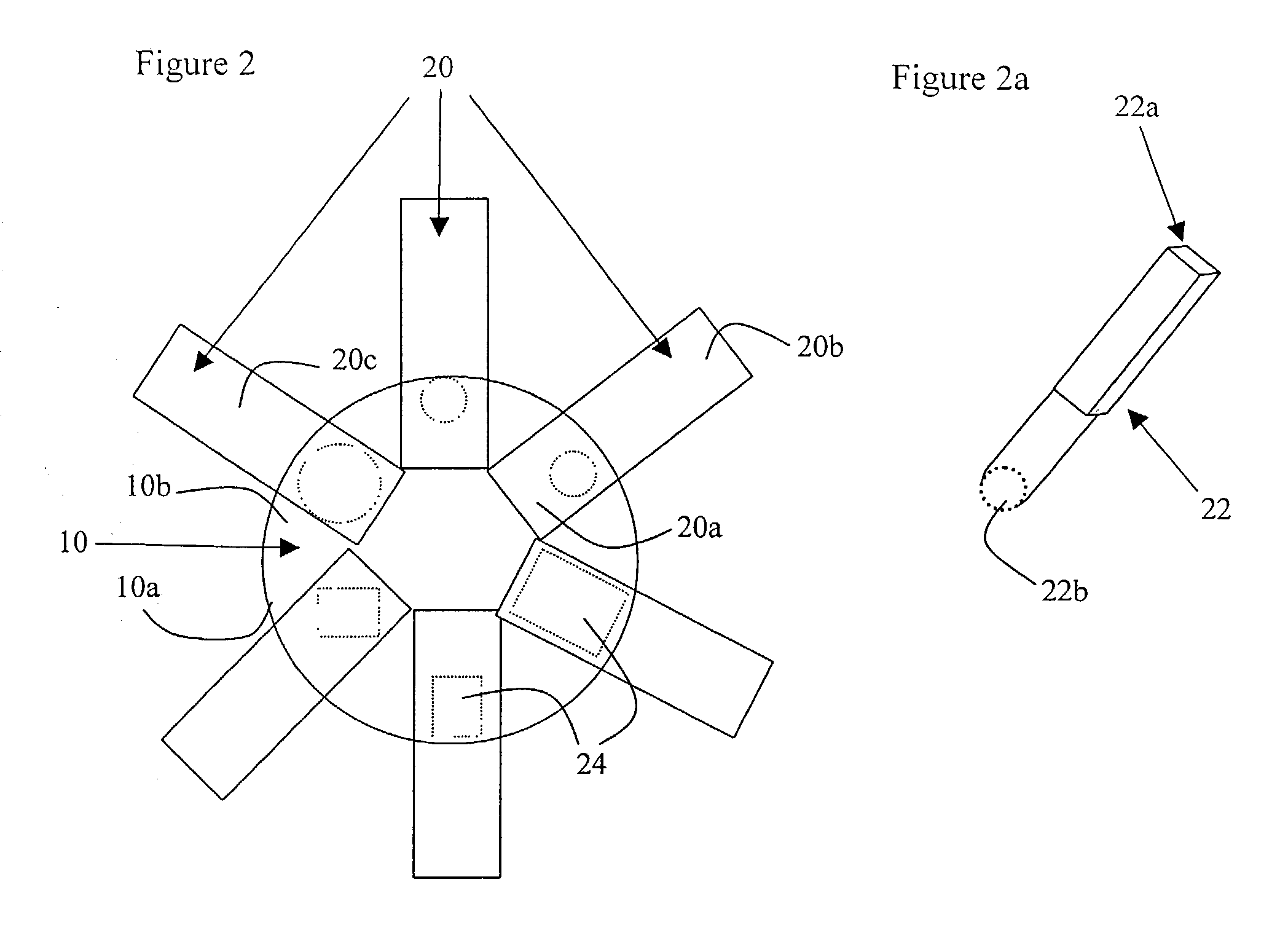Filter devices for depositing material and density gradients of material from sample suspension
- Summary
- Abstract
- Description
- Claims
- Application Information
AI Technical Summary
Benefits of technology
Problems solved by technology
Method used
Image
Examples
Embodiment Construction
[0042]While the invention may be susceptible to embodiment in different forms, there is shown in the drawings, and herein will be described in detail, specific embodiments with the understanding that the present disclosure is to be considered an exemplification of the principles of the invention, and is not intended to limit the invention to that as illustrated and described herein.
[0043]FIG. 1 shows a generally disk-shaped filter 10 installed at the bottom of a sample chamber 12. The filter 10 has an upper collection surface 10a and a lower surface 10b. The sample chamber 12 is generally cylindrical, providing a top opening 14 for the introduction of a sample suspension. The perimeter of the filter 10 is slightly smaller than the interior dimension of the sample chamber 12. Thus the perimeter of the filter 10 extends to the interior surface of the sample chamber 12. The sample chamber 12 is placed over a vacuum assembly 16 and is preferably fitted thereto through an adapter cone 18...
PUM
| Property | Measurement | Unit |
|---|---|---|
| Concentration | aaaaa | aaaaa |
| Density | aaaaa | aaaaa |
| Dimension | aaaaa | aaaaa |
Abstract
Description
Claims
Application Information
 Login to View More
Login to View More - R&D
- Intellectual Property
- Life Sciences
- Materials
- Tech Scout
- Unparalleled Data Quality
- Higher Quality Content
- 60% Fewer Hallucinations
Browse by: Latest US Patents, China's latest patents, Technical Efficacy Thesaurus, Application Domain, Technology Topic, Popular Technical Reports.
© 2025 PatSnap. All rights reserved.Legal|Privacy policy|Modern Slavery Act Transparency Statement|Sitemap|About US| Contact US: help@patsnap.com



